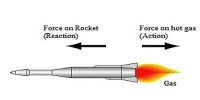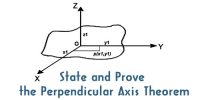The second law states that the rate of change of momentum of a body, is directly proportional to the force applied and this change in momentum takes place in the direction of the applied force.
Newton’s first law of motion deals with the behavior of objects on which all existing forces are balanced. Also, it is clear from the first law of motion that a body in motion needs a force to change the direction of motion or the magnitude of velocity or both. This implies that force is such a physical quantity that causes or tends to cause acceleration.
Newton’s second law of motion deals with the behavior of objects on which all existing forces are not balanced. According to this law, the rate of change of momentum of a body is directly proportional to the external force applied on it and the change in momentum takes place in the direction of the force.
If p is the momentum of a body and F the external force acting on it. then according to Newton’s second law of motion.
F α (dp/dt)
(or) F = k (dp/dt), where k is a proportionality constant.
If a body of mass m is moving with a velocity v, then, its momentum is given by p = m v.
So, F = k (d/dt) (m v)
Unit of force is chosen in such a manner that the constant k is equal to unity. (i.e) k =1.
So, F = k (dv/dt) (m v)
Where, a = dv/dt; is the acceleration produce in the motion of the body.
The force acting on a body is measured by the product of mass of the body and acceleration produced by the force acting on the body. The second law of motion gives us a measure of the force.
The acceleration produced in the body depends upon the inertia of the body (i.e) greater the inertia, lesser the acceleration. One Newton is defined as that force which, when acting on unit mass produces unit acceleration. Force is a vector quantity. The unit of force is kg m s-2 or Newton. Its dimensional formula is M1T-2.














